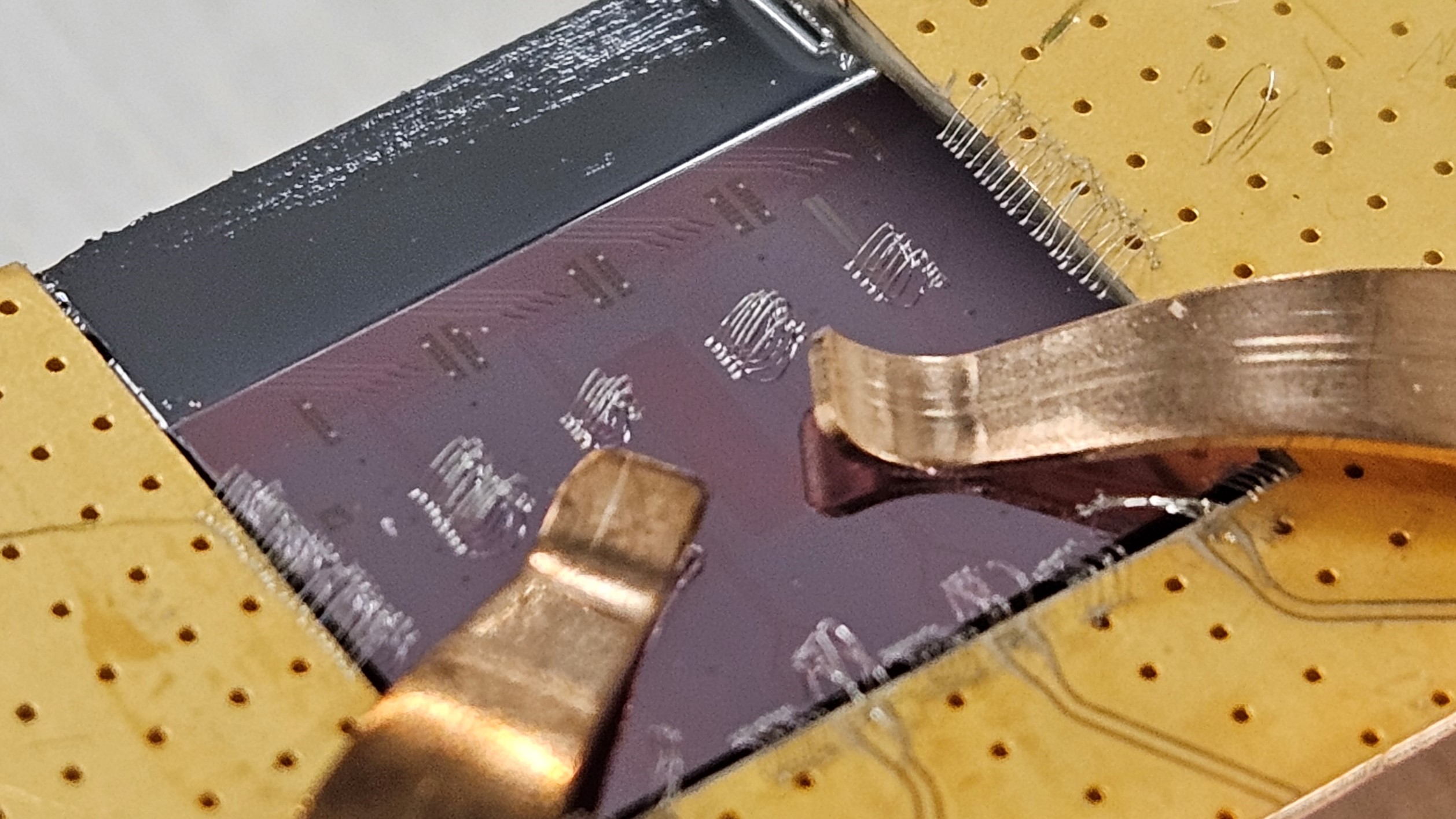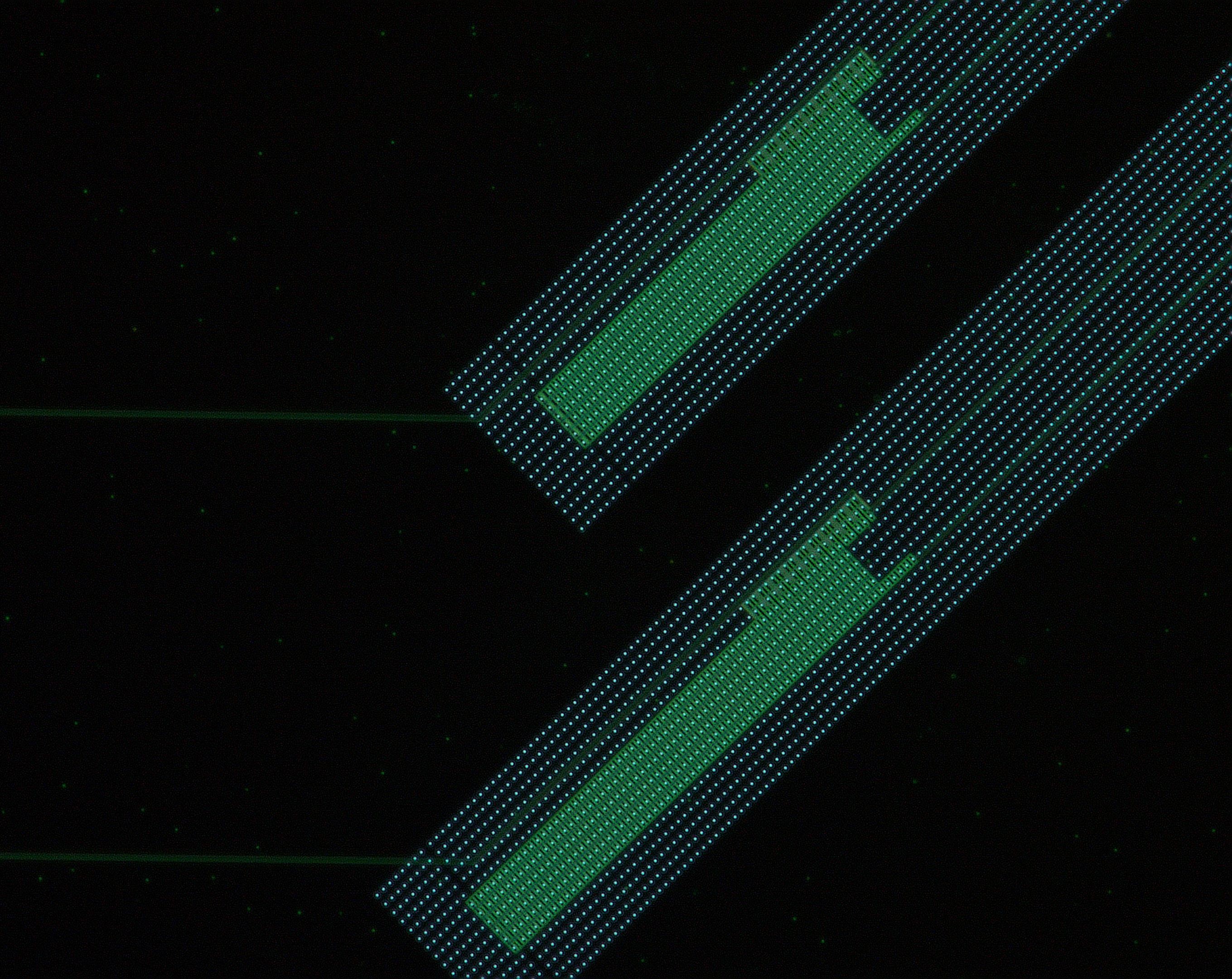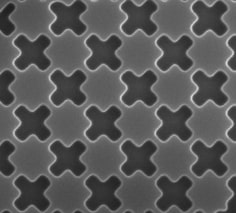research
Quantum optical networking of superconducting qubits

The growing complexity of today’s quantum processors suggests that large-scale quantum computers in the future will likely be modular systems based on a network of processors. To address the quantum interconnect challenge for such networks, we are interested in devices that can link quantum information in superconducting qubits and optical communication channels. This research direction is motivated by a long-term vision of a distributed quantum computing architecture where superconducting quantum processors in separate cryogenic nodes are interconnected by means of quantum optical networking protocols.
Novel superconducting circuits for quantum transduction

Conventional superconducting quantum circuits such as transmon qubits are typically designed and optimized for high-fidelity logic operations. We are interested in new types of quantum circuits optimized for coherent coupling to non-circuit excitations such as acoustic phonons, optical photons and defect centers. This research direction involves exploration of new material systems and co-design of superconducting microwave circuits with other types of qubits that can act as quantum transducers, sensors and memories.
Physics and engineering of defect center qubits

Defects in solids can behave like artificial atoms and allow us to encode qubits in their internal electronic levels. For instance, color-center defects can provide optically accessible spin qubits for entanglement distribution over long distances. On a different note, uncontrolled material defects can act as a significant source of decoherence in various chip-scale quantum objects including superconducting circuits. We are interested in using nanoscale devices for (i) fundamental studies of how defects interact with their solid-state environment, and (ii) engineering of coherent defect center qubits for quantum information systems.
Quantum acoustics

Phonons in nanoscale acoustic devices can have ultra-long lifetimes at cryogenic temperatures and interact with a broad variety of qubits. We are interested in (i) new devices and techniques to control single phonons in quantum electrical and optical circuits, and (ii) limits of quantum coherence in acoustic devices at ultra-low temperatures.
Previous research highlights

Quantum interconnects between superconducting devices and light
- Non-classical microwave-optical photon pair generation with a chip-scale transducer in Nature Physics; first demonstration of quantum correlations between single optical and microwave photons
- Entangling time-bin photonic qubits at optical and microwave frequencies in Phys Rev X
Early contributions on the silicon-vacancy center in diamond
- Strain engineering of the SiV in diamond in Phys Rev B; a detailed resource on the electronic structure of the SiV, also relevant to other group-IV vacancy centers in diamond
- Controlling spin coherence with a MEMS device in Nature Communications; work on tailoring interactions between a single defect qubit and its phonon environment; popular coverage: Straining a diamond in Ars Technica
Development of an integrated quantum photonics platform in diamond
- Quantum interference of electromechanically stabilized emitters in nanophotonic devices in Phys Rev X; popular coverage: Entangling photon sources on a tiny bridge in Physics
- Fiber-coupled diamond quantum nanophotonic interface in Phys Rev Applied
- High quality-factor optical nanocavities in diamond in Nature Communications
Quantum acoustics
- High efficiency low noise photon-phonon transducers with optomechanical crystals in Optica
- In-situ tuning of optomechanical crystals with AFM nano-oxidation in Optica
- Coherent acoustic control of a single SiV spin in diamond in Nature Communications
- Phonon networks with SiV centers in diamond waveguides in Phys Rev Lett; proposal for high-fidelity spin-spin interactions mediated by phonons
- Diamond optomechanical crystals in Optica